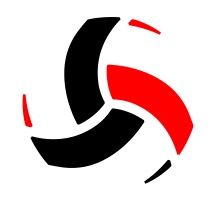Although a great deal of the instruction describes beach volleyball primarily as a doubles game, many, if not most, people are exposed to it in the 4v4 format. These articles focus on tips and discussions that improve the quads game.
Conventionally, the quads game is treated as a novice version of the sport, with many players thinking that they can “graduate” to the doubles game. But the number of variables and potential plays are much greater with four players than two, and thus, it is a far more complex game to master. It combines many of the potential strategies from indoor volleyball, and couple it with the environmental challenges of beach volleyball, and while it can appear to be less daunting to a novice due to the greater number of people supporting any one player, communities of quads teams fall into limited set strategies and seldom progress to more sophisticated plays.
Given the opportunity to teach quads players, I ask teams to let go of their ball control orientation with the net, a system that I also apply to beginning doubles players. Many quads teams fall into this idea of the diamond formation, where a setter is situated at near the middle of the net, and the other three players attempt to pass the ball to that spot near the net. This is derived from the indoor volleyball 4-2 passing formation, and thus appears to be relatively easy to communicate specially among players who have had exposure to indoor volleyball culture.
But this approach demands precision passing to a set location on the court. This effectively creates a very high bar of body control, and is also poorly adaptable. By pegging the plays to specific coordinates on the court, the players are often taken off balance by factors like the weather, or just a strong float situation.
If the team moves their coordinate system from having one team mate pegged to the net, and instead shift their passing focus to the area bounded by the imaginary boundaries formed by the four players, less precise passing becomes acceptable. This also frees the entire team to move as a unit, gaining confidence in having assistance nearby as they track the ball, instead of trying to change the distance constantly as the action moves nearer or farther from the net. Moreover, setting is also simplified, since the ball is brought to the attacker, rather than trying to coordinate interception of a ball being forced to the net.
Adopting a team oriented control strategy as opposed to a court oriented one is more easily implemented when the athletes aren’t coming from a conventional indoor volleyball cultural background, where this more malleable passing formation can appear confusing.


Leave a Reply